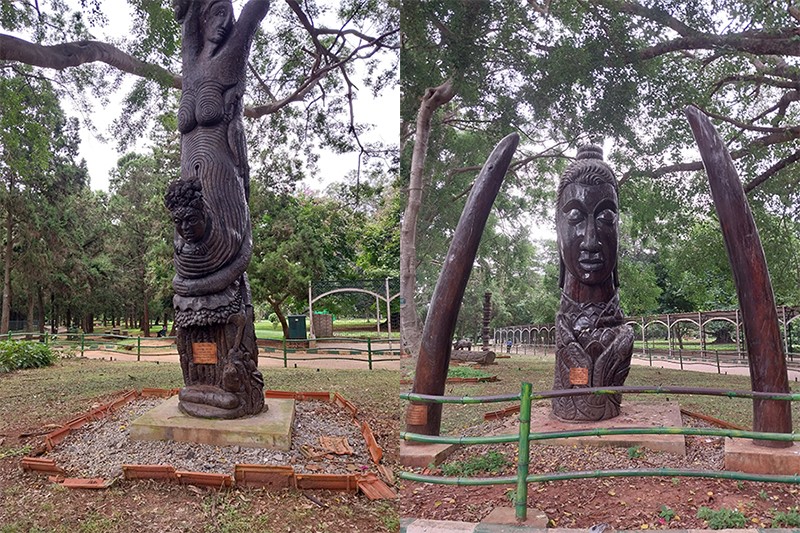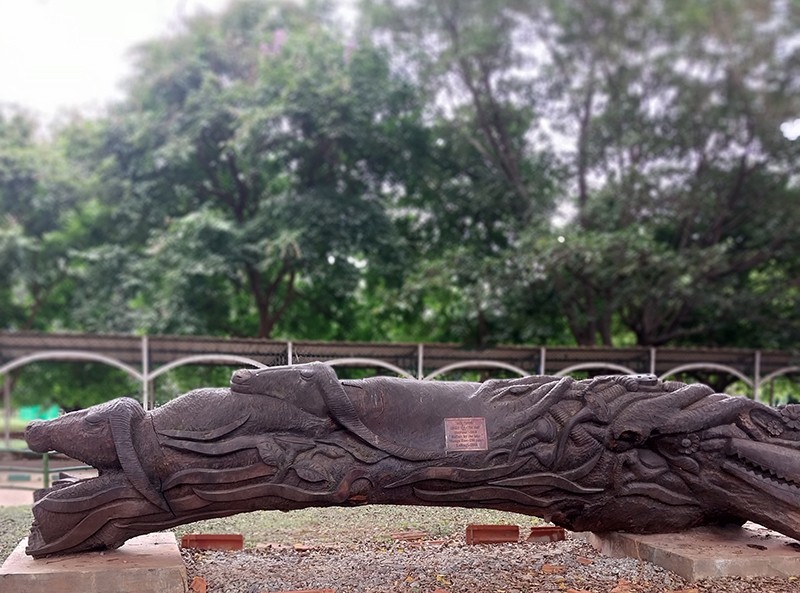 Lal Bagh I Bengaluru
Lal Bagh I Bengaluru
Wood stories
I was walking around in the famous Lal Bagh of Bengaluru on a monsoon day recently when some huge structures caught my eye. Sure, the Lalbagh Botanical Garden, its formal name, is known all over for its sprawling 240 acre area, its 200 year old history starting with ruler Hyder Ali, its more than 1,000 species of plants- some centuries old, etc., but these structures were different. Amidst the bright bougainvillea shrubs, lush green vegetation, palm trees with drooping leaves, these dark brown majestic figures stood apart. What or, who were they?
A closer look was due. I scrutinised them going nearer. They were actually sculptures carved out of centuries old trees that had died. Even big trees die for various reasons like pests, old age, lightening, floods, etc., that is, if not cut down by marauders. What impressed me was that the planners had the foresight enough not let them disappear from sight forever. By shaping them into something else, the artists have given new life to them to delight visitors, and also keep their memories alive.
Look at that one. A mother and a child. And that one, a magnificent woman’s face. And can you see that pair of bison sleeping?
There are 41 wooden sculptures in Lalbagh, carved out of old trees by artists from all over the country. Many of the trees fell down during the flood fury of 2017, among them a 200-year-old eucalyptus and 250-year-old mango tree. An extra layer of protection from the Indian Plywood Industries Research and Training Institute has kept them well-protected.
It’s nice to know that the Victoria Memorial Hall in Kolkata has also entered into a collaboration with Kala Bhavan at Visva-Bharati to infuse life into dead trees, victims of storms, by transforming them into eye-catching sculptures.
The sculptures in Lal Bagh perhaps silently thank their luck that they did not end up as firewood and are still alive to keep vigil over this beautiful, well-maintained garden.
‘The caterpillar dies so the butterfly could be born’: John Harricharan

Top Headlines
-
Random Thoughts
The silent cycle
May 12, 2025
-
Random Thoughts
Dead as a dodo?
September 30, 2024
-
Random Thoughts
Those who heal
August 22, 2024
-
Random Thoughts
Music does it
February 26, 2024
-
Random Thoughts
Talking...talking
December 15, 2023
-
Random Thoughts
The other side of happiness
October 18, 2023
-
Random Thoughts
Theatre of the absurd
June 07, 2023
-
Random Thoughts
Looking back with stars
January 19, 2023
-
Random Thoughts
Hope, despite everything
November 02, 2022
-
Random Thoughts
Wood stories
September 03, 2022
